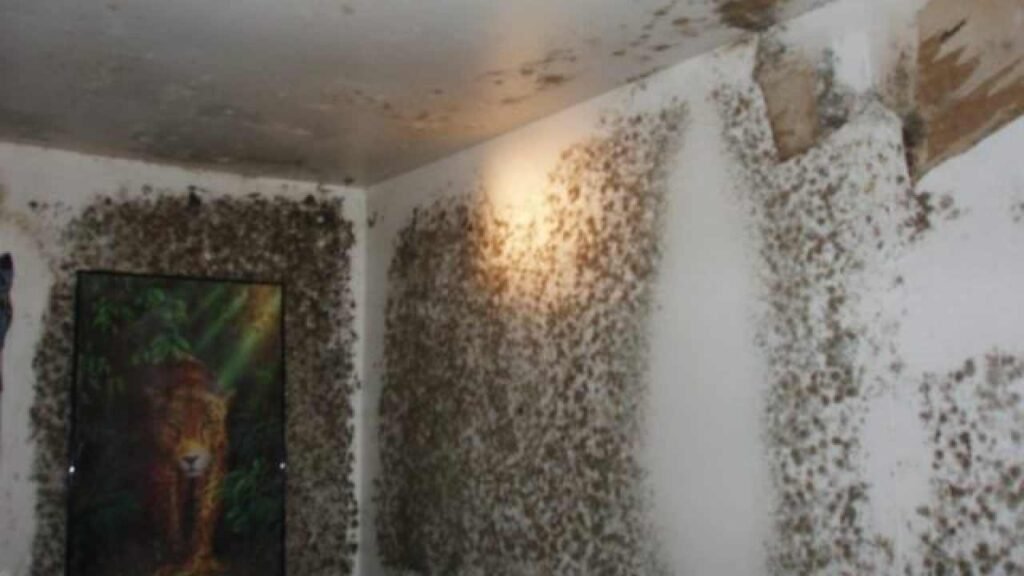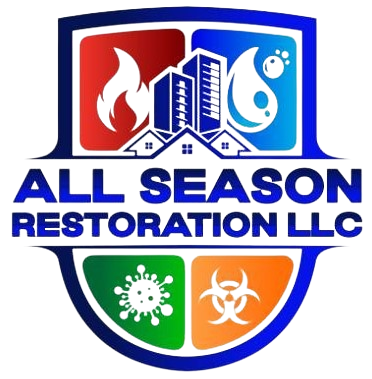Water damage and mold growth are not just unsightly; they can also pose serious health risks if left untreated. When water seeps into your home, whether from a leaky roof, burst pipe, or flooding, it creates the perfect environment for mold to thrive. Mold spores can spread quickly, infiltrating walls, floors, and furniture, leading to respiratory issues and allergies. Prolonged exposure to mold and water damage can worsen conditions like asthma, sinus infections, and even cause skin irritation. In this guide and with the support by All Season Restoration, we will explore the various health risks associated with untreated water damage and mold, as well as the importance of timely intervention to mitigate these dangers and protect your home and health.

Additionally, the longer water damage and mold are allowed to persist, the more extensive and costly the damage becomes. Understanding the health risks associated with untreated water damage and mold is essential for taking immediate action and protecting both your home and well-being. Mold can spread silently, often hidden behind walls or under flooring, making it even harder to address without proper inspection. Water damage restoration services can help detect and mitigate the damage early on, preventing further complications. Early detection and remediation are key to preventing serious health problems and ensuring the safety of everyone in the household.
The Health Hazards of Mold Exposure
Mold exposure can lead to a variety of health issues, especially when it is left untreated. Mold spores are known to irritate the respiratory system, which can lead to conditions such as coughing, sneezing, and wheezing. People with weakened immune systems, the elderly, and children are particularly vulnerable. The presence of mold in your home can exacerbate existing health conditions, such as asthma, sinus issues, and allergies. When mold spores are inhaled, they can irritate the airways, leading to further complications. In some cases, prolonged exposure to mold can result in more serious conditions, including chronic respiratory illnesses. Immediate water damage restoration is essential to prevent mold growth and further health risks, ensuring a safer environment for all.
How Mold and Water Damage Affect Indoor Air Quality
Mold and water damage can severely impact indoor air quality, making your home environment unsafe for occupants. Common causes of water damage, such as leaky pipes, roof leaks, flooding, and improper ventilation, create a breeding ground for mold growth when water infiltrates walls, floors, or ceilings. As mold colonies expand, they release spores into the air, which can circulate throughout your living spaces. This polluted air can be harmful to anyone breathing it in, especially individuals with respiratory conditions like asthma or allergies. Damp, moldy air can cause discomfort, exacerbate symptoms, and create an unhealthy environment. Ensuring that mold is remediated quickly and thoroughly is key to improving indoor air quality, preventing long-term health risks, and keeping the air clean and safe for your family.
Respiratory Issues Linked to Mold Growth
Mold growth is closely linked to respiratory issues, particularly in individuals with pre-existing conditions or sensitivities. When mold spores are inhaled, they can cause irritation in the lungs and airways, leading to coughing, wheezing, and shortness of breath. Individuals with asthma are especially susceptible to mold-related respiratory problems, as mold exposure can trigger asthma attacks or make symptoms worse. Even those without prior respiratory conditions may develop issues after prolonged mold exposure, including chronic congestion or sinus problems. Mold can also increase the risk of respiratory infections, making it essential to address water damage and mold growth as soon as they are detected to avoid these serious health concerns.
Impact of Mold on Individuals with Allergies
Mold exposure can trigger allergic reactions in many individuals, particularly those who are already prone to allergies. The mold spores that are released into the air can act as allergens, leading to symptoms such as sneezing, itchy eyes, and runny noses. For some, mold exposure may also cause skin rashes or irritation. Individuals with existing allergies to pollen, dust, or pet dander may experience more severe reactions when exposed to mold. Mold can also exacerbate existing conditions like hay fever or allergic rhinitis, increasing the need for treatment or medication. Removing mold as soon as possible is crucial in protecting the health of individuals with allergies and preventing further allergic reactions.
Mold’s Role in Worsening Asthma Symptoms
Mold can be a significant trigger for asthma sufferers, worsening symptoms and making asthma attacks more frequent and severe. When mold spores are inhaled, they can cause inflammation in the airways, leading to increased asthma symptoms such as wheezing, coughing, and chest tightness. For individuals with asthma, even brief exposure to mold can lead to significant breathing difficulties. Mold-induced asthma exacerbations can be dangerous, especially if left untreated, as they can result in hospitalization or long-term lung damage. Ensuring that mold is properly removed from your home is essential to prevent worsening asthma symptoms and ensuring that the air remains safe for individuals with this chronic condition.
The Connection Between Mold and Sinus Infections
Mold exposure is commonly linked to sinus infections, especially in individuals with compromised immune systems or allergies. Mold spores can irritate the sinuses, leading to inflammation and congestion. This congestion can lead to the development of a sinus infection, characterized by facial pain, headache, nasal discharge, and difficulty breathing through the nose. People with chronic sinus issues are particularly vulnerable to mold-induced sinus infections. In some cases, untreated mold can lead to recurrent sinus problems, making it important to remove the source of moisture and mold growth. Effective mold remediation not only addresses the mold but can help prevent ongoing sinus infections and improve overall sinus health.
How Water Damage Promotes Mold Growth
Water damage is one of the leading causes of mold growth, as mold thrives in damp, humid conditions. When water seeps into areas like floors, walls, or ceilings, it creates the perfect environment for mold spores to germinate and multiply. The longer the water sits, the more likely it is for mold to develop, especially in areas with poor ventilation. Even seemingly minor water leaks can lead to significant mold problems if not addressed promptly. This is why it’s crucial to dry out wet areas within 24 to 48 hours to prevent mold growth. Regular inspections and timely repairs to prevent water damage are key to avoiding mold issues in your home.

The Dangers of Ignoring Early Water Damage Signs
Ignoring early signs of water damage can lead to extensive damage and health risks, particularly when it comes to mold growth. Water stains, musty odors, or increased humidity in the home are all signs that water may be infiltrating your living space. Left unchecked, these early signs can develop into larger issues, such as mold growth, structural damage, and compromised indoor air quality. The longer water damage is allowed to persist, the more expensive and complex the remediation process becomes. Addressing water damage as soon as it is detected is essential for preventing mold growth and mitigating the health risks associated with untreated water damage.
Skin Irritations Caused by Mold Exposure
Mold exposure isn’t just a concern for the respiratory system; it can also lead to skin irritations. When mold spores come into contact with the skin, they can cause rashes, itching, and irritation. Some individuals are more sensitive to mold than others and may experience more severe reactions, such as hives or eczema. Prolonged contact with mold can exacerbate these symptoms, leading to chronic discomfort. People with weakened immune systems or compromised skin barriers, such as eczema or psoriasis, are more vulnerable to these skin irritations. Removing mold promptly and protecting your skin from direct contact with mold is vital to prevent these unwanted side effects.
Long-Term Health Effects of Untreated Mold Infestations
The long-term health effects of untreated mold infestations can be serious, ranging from chronic respiratory issues to neurological problems. Prolonged exposure to mold can lead to conditions like asthma, sinusitis, and even permanent lung damage. Mold has also been linked to fatigue, headaches, and cognitive issues, such as memory loss and difficulty concentrating. People who live in mold-infested environments for extended periods are at greater risk of developing long-term health conditions. Addressing mold growth early is essential in preventing these long-term effects, as prolonged exposure can have lasting impacts on the health and well-being of those living in affected areas.
How Professional Mold Remediation Services Protect Your Health
Professional mold remediation services are essential for protecting your health when dealing with mold infestations. These experts are equipped with the knowledge, tools, and safety equipment needed to properly assess and remove mold from your home. Professionals can identify hidden mold growth that may not be visible to the untrained eye and can take the necessary steps to ensure that the affected area is thoroughly cleaned and treated. By hiring a professional, you reduce the risks associated with mold exposure, as they know how to safely remove mold without spreading spores throughout your home. Additionally, they can help prevent future mold growth by addressing the root cause of the water damage.
Conclusion
In conclusion, untreated water damage and mold growth pose significant health risks, ranging from respiratory issues and allergies to skin irritations and long-term conditions. Mold exposure can exacerbate pre-existing health conditions like asthma and sinus infections, making it essential to address water damage promptly. The presence of mold not only affects indoor air quality but can also lead to costly damage to your home if left unaddressed. Taking immediate action to mitigate water damage and hiring professional mold remediation services can help safeguard your health and prevent further complications. By understanding the dangers and recognizing the signs of water damage and mold, you can protect both your home and your well-being for the long term.
FAQs
What are the health risks of untreated water damage and mold?
Untreated water damage and mold can cause respiratory issues, allergies, skin irritation, and worsen conditions like asthma. Prolonged exposure may lead to chronic health problems.
How can I prevent mold growth after water damage?
To prevent mold growth, promptly address water damage by drying affected areas, using dehumidifiers, and ensuring proper ventilation. Professional water damage restoration services can help.
How long does it take for mold to grow after water damage?
Mold can begin to grow within 24 to 48 hours of water exposure, especially in areas with high humidity or poor ventilation.
Can water damage be repaired without professional help?
Minor water damage can be addressed by homeowners with drying techniques, but extensive damage or mold growth typically requires professional water damage restoration services.
Is mold removal covered by insurance?
Mold removal coverage depends on your insurance policy and the cause of the water damage. It’s best to check with your provider for specific coverage details.
